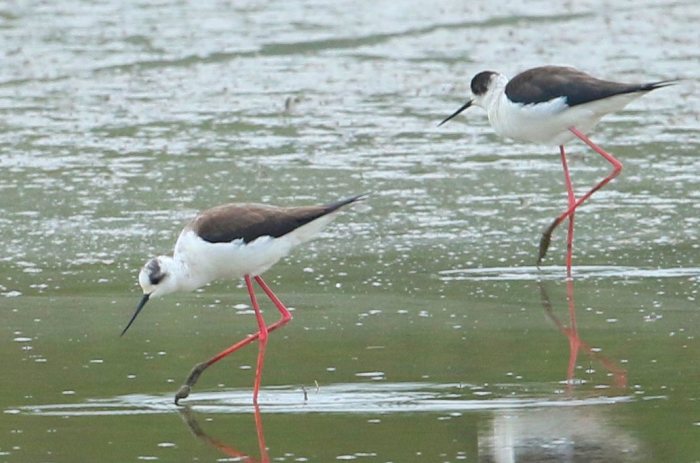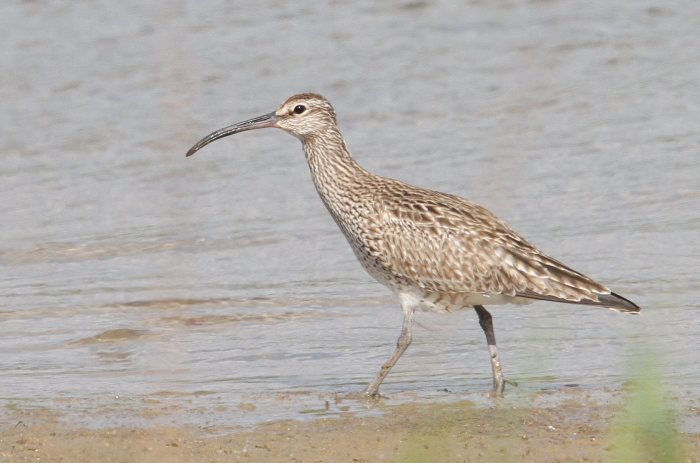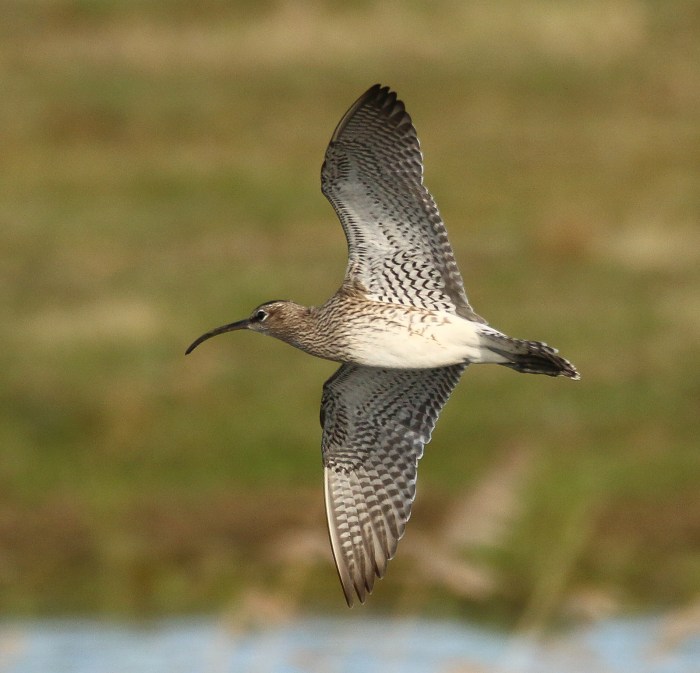The week remained largely dry, dominated initially by brisk north-westerlies, which gave way to a spell of north-easterlies and cold overnight temperatures for a short spell during the latter part of the period. Allowing extra birding time for some, the Easter bank holiday did not fail to disappoint but the undoubted highlight of the week was the one-day stay of three Black-winged Stilts at Stanford Reservoir on 20th. Summer visitors continued to arrive, including the first Common Swifts, Common and Lesser Whitethroats, as well as Yellow Wagtails en masse but there were still some lingering winter visitors which included up to eight Bramblings at one site.
The Whooper Swan which spent the winter at Sywell CP went unreported this week but one flying south over Bozenham Mill on 18th may, or may not, have been the same individual. Single female Garganeys visited Pitsford Res on 16th and Ditchford GP on 19th, up to two drake Red-crested Pochards were at Thrapston GP between 17th and 20th and the female Scaup was still present at Stanwick GP until at least 17th. Stanford’s long-staying first-year drake Long-tailed Duck remained throughout the period, having gone on an away-day to Draycote Water in neighbouring Warwickshire on 9th, before duly returning the following day. Admirably site-faithful, it surely can’t stay there for much longer … can it?

Wholly unpredicted, Sywell CP pulled this year’s Easter Bunny out of the hat in the shape of an adult Gannet there on 15th. Approachable and seemingly moribund, it appeared to go to roost on the dam as dusk fell but it was nowhere to be found the following morning; most records are of juveniles in autumn.


And it seems we are still not yet done with Great White Egrets as one was seen flying north-east along the Nene Valley at Stanwick GP on 19th. Compared with last week, there were few Ospreys reported during the period, with sightings at Pitsford Res on 15th and 16th probably relating to the same bird, which performed well, by all accounts.

Looking to seriously rival Summer Leys as this year’s spring hotspot, Stanford Res went and did it again, delivering a trio of Black-winged Stilts on 20th. In all their pink, black and white glory, they remained on show from dawn until dusk but had duly departed by the following morning.


So, after last week’s Common Cranes: Stanford 2-0 Summer Leys. Stanford also produced a Whimbrel on 18th plus five more the following day, five Black-tailed Godwits on 19th and one on 20th and a Bar-tailed Godwit from 19th to 21st. Imagine what could happen if we drained Pitsford during the spring … Single Whimbrels were also at Pitsford Res on 15th and at Summer Leys from 18th to 21st, with the latter site holding up to two Ruffs between 15th and 21st.




A Black Tern at Pitsford Res on 21st was the second record of the spring, while the first migrant Arctic Terns showed up this week and included single fly-throughs at Pitsford Res on 15th, 16th and 19th, one at Thrapston GP on 17th, followed by twelve at Clifford Hill GP on 18th and one there the next day.

The week’s only Little Gull visited Pitsford Res on 18th and the same site produced a Yellow-legged Gull on 16th, while a near-adult was at Summer Leys the following day.
It’s been a poor spring for Common Redstarts so far and the last week produced just three on 15th, comprising two on Borough Hill and one near Long Buckby but Northern Wheatear numbers picked up with Borough Hill and Harrington AF hosting three a piece, again on 15th, when there was also one at Stanford Res. At least two remained at Harrington on 16th-17th, eight were near Castle Ashby on 16th, Thrapston GP and Shutlanger held four a piece on 17th, three were at both Bozenham Mill and Newton Bromswold on 18th and one was at Clifford Hill GP on the same date with three there on 20th.

A decent influx of Yellow Wagtails – maxing out at more than fifty at Pitsford Res on 18th – brought with it a couple of smart ‘Channel’ Wagtails, both on that date, the first at Clifford Hill GP and the other accompanying the Pitsford yellows and remaining until the following day.


The county also enjoyed astonishing numbers of White Wagtails with Stanford Res taking the lion’s share of twenty-two present on 18th and double-figure counts there on most days during the week. Elsewhere, singles were at Pitsford Res on 15th, 16th and 17th plus two there on 21st, one visited Stanwick GP on 17th and five were at Clifford Hill GP on 18th.

A Tree Pipit – a county scarcity which now attracts a description submission in neighbouring Bedfordshire – flew over Hazelborough Forest on 16th and single Rock Pipits (or perhaps just one lingering bird) were at Pitsford Res on 15th and 17th-18th.
Discover more from Northants birds
Subscribe to get the latest posts sent to your email.
Hi mike wondered if you could advise me on any local areas to sight kingfishers I don’t know if they are nesting yet, only manage to get flashes as they zoom past have never got a decent look at one!
The views you describe are typical for most birders. I would suggest you persevere in the areas you know where they occur, do some detective work and find out where they regularly sit as they tend to have favourite perching places.